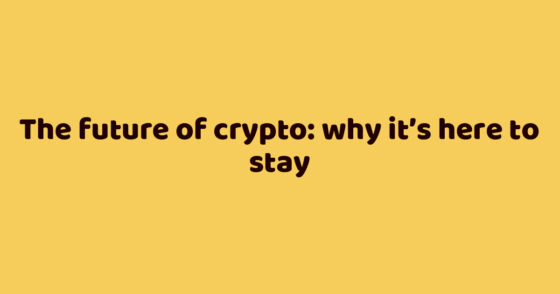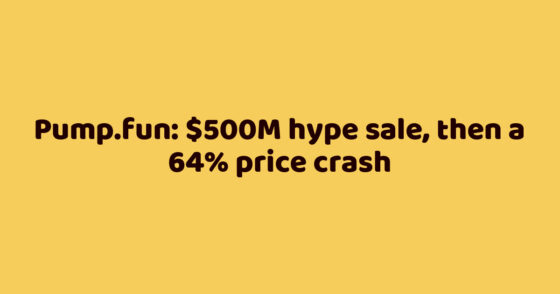In traditional finance, a popular way to generate passive income is to keep money in bank deposits or low-risk investments like bonds. This approach allows you to build capital and earn a stable income over the long term. Owners of digital assets do not have these options, but they can earn through staking, a mechanism that allows them to earn rewards by participating in the security of a particular network.
In this guide, we will look at what staking is, how it works, the benefits it can offer investors, and the risks involved.
What is Proof-of-Stake (PoS)?
Proof-of-Stake (PoS) is a consensus algorithm that makes the blockchain work, validates transactions and protects the network from attackers. It is designed to be a more energy-efficient and scalable alternative to Proof-of-Work (PoW), which uses computing power to ensure the security of the network.
In PoS, tokens become the main resource for participating in consensus. Participants block their assets to become validators, and the network selects those who validate transactions and add new blocks. The chances of becoming a validator depend on the number of tokens blocked, as well as other factors such as staking time and an element of randomness.
To ensure the loyalty of validators, the PoS algorithm uses a penalty mechanism – slashing. If a network participant violates the rules, its assets can be partially or fully confiscated.
Because of its features, Proof-of-Stake has become a staple of modern blockchains, providing an energy-efficient solution for supporting consensus and making participation in the network accessible to any token holder. And PoS, as mentioned above, is based on staking.
What is native staking?
Native staking is the process of staking cryptocurrency directly onto the blockchain to make it work and earn rewards. Participants in native staking can also become validators and help validate transactions, create new blocks and keep the network secure. Participation in native-stacking typically requires a dedicated wallet and a minimum number of tokens, as determined by the blockchain’s requirements.
However, blockchain assets in staking do not mean automatic status with validators – these network participants must also run their own node, so users who are unwilling or unable to do so have the option to delegate their tokens. They delegate assets to one of the validators through special platforms and receive a portion of their reward for the work.
Liquid staking and Restaking
Current approaches to using tokens to support the blockchain include two key areas in addition to native stacking: liquid staking and restaking. They expand the ways in which tokenized assets can be used, making the process more flexible and profitable.
Liquid staking, for example, allows users to pledge their funds to support the network in exchange for liquid tokens representing their assets. These tokens can be used in DeFi protocols to earn, trade or invest. In this way, liquid tokenization solves the asset freezing problem characteristic of traditional tokenization.
Restacking is a mechanism that allows the reuse of assets that have already been locked in staking. It is used to provide additional networks or protocols.
For example, in the EigenLayer project, Ethereum validators can provide their staked tokens to secure new decentralized applications, cross-chain bridges or oracles. For this, they receive additional remuneration.
However, re-staking also comes with increased risks: validators can be sanctioned if they violate the rules of additional protocols, which can lead to the loss of assets.
The difference between staking, farming and mining
Staking, farming and mining are three different approaches to making money in the crypto industry, with different goals, requirements and risks. However, beginners often confuse them and perceive them as similar methods of generating passive income from digital assets.
It is important to remember that staking is considered a greener solution to securing the blockchain compared to mining. In both cases, users can be active participants in the network, but mining requires powerful equipment that consumes a significant amount of electricity. In PoS networks, on the other hand, validators only need to block their tokens to participate in supporting the operation of the network.
Farming (or income farming) is of a different nature, but often involves “staking,” or asset locking. In this case, users freeze their tokens in smart contracts to provide liquidity to decentralized protocols such as exchanges or lending platforms.
The reward for farming is often expressed in management tokens or a percentage of transactions. Unlike staking, farming is not associated with maintaining network security. Instead, it is used to provide liquidity or other purposes in DeFi. However, farming carries additional risks, including volatile losses that occur when the prices of assets locked in pools change.
This comparison provides a better understanding of which method is appropriate for a user’s specific goals.
What are the pros and cons of staking?
The main benefits of staking:
Passive income. Staked tokens continue to work for the owner, earning rewards without the need for active action. This makes staking particularly attractive to long-term investors;
Network support. By staking, users ensure the security and stability of the blockchain and become an important part of its ecosystem;
Accessibility. Earning money with staking does not require expensive equipment. It is enough to have cryptocurrency and use the right software.
Risks and disadvantages of staking:
Market volatility. The value of tokens can fall sharply, resulting in losses that may outweigh the gains;
Technical risks. Loss of assets is possible due to errors in smart contracts, hacking, or loss of access to the wallet. At the same time, the risks increase when using intermediaries;
Inaccessibility of tokens. During the blockchain, assets cannot be used, which limits their liquidity and the ability to sell them quickly. Liquid staking platforms are an exception.
Reduced risk. In the event of error or bad faith on the part of the validator, a portion of the staked assets can be confiscated as a penalty. This can apply to the user himself or to the validator to whom he has delegated the funds.
Many risks can be minimized with the right approach, such as choosing reliable providers or delegating assets to responsible validators who have a good reputation and offer a high share of the reward. It is also imperative to monitor the state of the crypto market and the price dynamics of the selected asset.
Top 10 cryptocurrencies to stake
The main indicator when choosing a network and platform for staking is the APY (Annual Percentage Yield), which reflects the annualized return taking into account the reinvestment of rewards. It is important to balance the rewards, the reliability of the network and the volatility of the investment.
Below is a list of the ten best capitalized cryptocurrencies for staking at the time of this writing, according to Staking Rewards.
Ethereum (ETH). Ethereum is the largest PoS blockchain with $132.4 billion in stakes blocked. The network offers an APY of 3.48% and is in demand due to its developed staking ecosystem, including LRT and LSD.
Solana (SOL). Solana is known for its fast transaction speeds and low fees. At the time of writing, it has $91.2 billion blocked on the network and an APY of 6.65%. You can also find liquid steaking and re-staking platforms here.
Sui (SUI). Sui is a next-generation blockchain that is rapidly gaining popularity. It has $33 billion blocked in steaking and an APY of 2.81%. The project is attracting attention with its advanced architecture and active user base growth.
Cardano (ADA). Cardano is one of the earliest and most stable PoS networks. There is $26 billion in stakes and the APY is 2.67%. The project is actively developing and expanding its ecosystem of decentralized applications.
Binance Coin (BNB). BNB is the native token of the Binance Smart Chain network, which is also used for steaking. As of this writing, $21.5 billion has been blocked at an APY of 7.22%.
Tron (TRX). Tron is one of the oldest blockchains with steaking support. The network has blocked over $13 billion in smart contracts with an APY of 4.65%. Due to its high throughput, Tron is actively used for transactions, especially stable coins.
Aptos (APT). Another promising network that is rapidly building out its infrastructure and competing with Sui. Aptos has $12.5 billion in stakable contracts and an APY of 7.00%. The project focuses on high performance and attracts developers with low fees.
Avalanche (AVAX). A popular ecosystem that combines fast transaction speeds and developer convenience through EVM compatibility. It has $12.41 billion in blocked stakes, with an APY as high as 7.79%. The network is used for DeFi, gamification and enterprise applications.
Polkadot (DOT). A blockchain with a unique architecture that supports parachains. It has $8.65 billion in stakes and an APY of 11.96%. The project is focused on interoperability and building a Web3 infrastructure, with the DOT token playing a key role.
Celestia (TIA). A modular blockchain that will launch on the mainnet in 2023. The network has $6.12 billion blocked and an APY of 10.69%. The project focuses on scalability and simplifying the interaction between developers and users.
With different profitability metrics and usage specifics, each of these projects offers unique opportunities for users looking to make money from staking.
The best platforms for staking
Choosing the right provider depends on the assets supported, level of reliability, and user preferences.
Below is a list of the largest staking providers with a brief description and statistics on the amount of blocked capital (TVL) and number of stakers.
Ether.fi (https://www.ether.fi/)
A decentralized Ethereum staking and liquidity platform that gives users full control over their assets, ensuring security and transparency.
TVL: $22.7 billion
Stakers: 260k
Credit Rating: AA
Kiln (https://www.kiln.fi/)
An enterprise-grade platform for staking Ethereum and other PoS assets, with easy integration for institutional clients and developers.
TVL: $10.7 billion
Stakers: 97k
Rating: AAA
P2P.org (https://p2p.org/)
Professional staking provider supporting blockchains like Solana, Bitcoin, Ethereum and others.
TVL: $10 billion
Stakers: 90k
Credit Rating: AAA
All Nodes (https://www.allnodes.com/)
Node hosting and staking platform that supports multiple blockchains with a focus on simplicity and reliability.
TVL: $6.56 billion
Stackers: 308k
Credit Rating: AAA
Consensys Staking (https://consensys.io/staking)
Ethereum staking solution from Consensys, offering a high level of security and integration with other products in the ecosystem.
TVL: $3.47 billion
Stakers: 28k
Rating: AAA
Stakin (https://stakin.com/stake)
A professional staking provider offering services to various PoS networks such as Solana, Ethereum, Celestia and others.
TVL: $3.26 billion
Stakers: 71k
Credit Rating: AAA
Staking Facilities (https://stakingfacilities.com/)
German provider of staking facilities for PoS networks, targeting institutional clients with high security standards.
TVL: $3.17 billion
Stakers: 22k.
Rating: AAA
These platforms offer a wide range of staking solutions to meet the needs of both institutional and retail users. And the list of supported networks allows each investor to find their own balance between risk and reward.
Conclusions
Staking is a way to generate passive income, as well as an opportunity to actively participate in supporting blockchain operations. Its popularity is due to its energy efficiency compared to mining, the affordability of participation, and the prospect of stable rewards.
However, participating in the network infrastructure requires an understanding of the technical processes and risks involved. For beginners, staking can be an easy and affordable way to make money, provided they use providers that lower the entry threshold and the technical complexity of the process. However, it is important to choose platforms and projects carefully to minimize potential risks.
With the advent of innovations such as liquid staking and restacking, users have even more tools for flexible asset management. These solutions not only make the process more convenient, but also more attractive to both experienced investors and new entrants looking to integrate into the crypto ecosystem.








